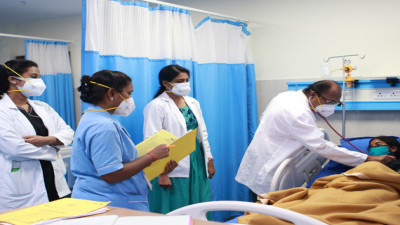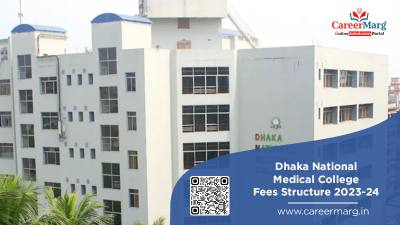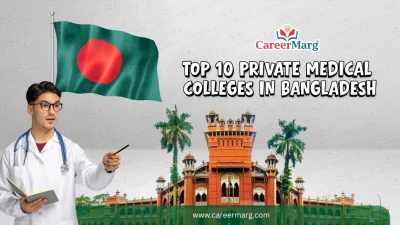India’s No. 1 Online Admission Portal Apply Now
India’s No. 1 Online Admission Portal Apply Now
Government
1950
Karagandy, Kazakhstan
NMC, WHO
NMC, WHO
The history of the medical university since its inception is the path to becoming a professional leader not just in the field of medicine, but higher education in general. The history of the Karaganda State Medical University is a mirror of the history of the country, the formation of health care throughout Kazakhstan.
The development of the medical education system in our country began in 1931 with the founding of a medical university in Alma-Ata. However, soon the institute could not satisfy the growing need of the republic for medical personnel. In this connection, the republican bodies and the People's Commissariat of the USSR were asked about the need to open a medical institute in the city of Karaganda, which in 1940 became a regional centre with a population of more than 196 thousand people. But the Great Patriotic War changed plans, and the question of creating The Karaganda Medical Institute returned only in 1947 when the Karaganda Regional Health Department submitted a proposal to the Ministry of Health of the Soviet Union to open a university in the mining capital. Decree of the Council of Ministers of the USSR of November 16, 1947, obliged to transfer to Karaganda "one of the existing medical institutes." An order of the Chairman of the Council of Ministers of the USSR dated December 5, 1949, was issued with the instruction “to oblige the Council of Ministers of the RSFSR and the Ministry of Health of the USSR to transfer professors, teachers, and students who completed the first year from the liquidated Kazan Dental Institute to the Karaganda Medical Institute. The doctor was appointed director of the institute completed the first course. The doctor was appointed director of the institute completed the first course. The doctor was appointed director of the institute peer Moiseevich Pospelov.
In the direction of the People's Commissariat of Health of the USSR, Pyotr Moiseevich arrived in Karaganda from the Stavropol Territory, where he was born, studied and began his career. Karaganda became the cradle of the formation and growth of Pyotr Moiseevich as a doctor, teacher and major organizer of health care. Pospelov's professional medical work began in the second mine hospital as the head of the therapeutic department, and then as the head doctor of the hospital. In September 1939, Pyotr Moiseevich was appointed deputy head of the Karaganda regional health department. Since April 1940, P. M. Pospelov was approved as the head of the Karaganda Regional Department of Health. In April 1950, by the order of the Ministry of Health of the Kazakh SSR, Petr Moiseevich Pospelov was appointed director of the Karaganda Medical Institute (Karmi). The period from 1950 to 1974, when the university was headed by Pyotr Moiseevich, became the time of the creation and establishment of the institute.
The faculty of open KARMI was composed of specialists who came from Kazan to Karaganda: Professor Abram Iosifovich Lubbock, candidate of historical sciences Maria Mikhailovna Lonshakova, candidate of biological sciences Angelina Zorina, biologist Modest Evgenievich Afanasyev, biochemist Valentina Iosifovna Yakubovskaya, candidate of medical sciences, physiologist Anvar Arslanovich Uzbekov, senior lecturer Boris G. Mokeev, dental teachers Vera Stepanovna and Valerian Aleksandrovich Lavrov, teacher-anatomist Galia Gareevna Shamseeva, chemist Boris G. Grigoryevich Mokeev, infectious disease specialist Abraham Yakovlevich Shulgin, microbiologist Gregory G. Kuliogov Dina Lazarevna Tsirlina, Mark G. Shreiber, Grigory Yakovlevich Hvoles, therapist Evgeny Izrailevich Zuckerstein, physical education teacher Evgeny Petrovich Shevelev.
Republic of Kazakhstan
NMC, WHO
4
Karaganda State Medical University fees structure for Indian Students is according to given table:
| Particulars | Year 1 | Year 2 | Year 3 | Year 4 | Year 5 | Year 6 |
| Tuition Fee | 4500 USD | 4500 USD | 4500 USD | 4500 USD | 4500 USD | 4500 USD |
| Hostel Fee | 500 USD | 500 USD | 500 USD | 500 USD | 500 USD | 500 USD |
***Interim fee for the session 2025-2026 and subject to change as per the guidelines of State Level Fee Determination Committee, Government of Qaraghandy**.
Sports
Wifi
Girls Hostel
Medical Facilities
Transportation
Boys Hostel
Step 1. Fill out the application form (apply online).
Step 2. Attached are the documents given below:
Scanned copy of marks of completion of higher secondary education (12th grade).
Scanned copy of marks of completion of high education (10th grade).
NEET scorecard.
A scanned copy of your valid passport.
Step 3. After fulfilling all the conditions, students get an admission letter from the university.
Step 4. After receiving the confirmation letter, a student should pay the fees through net banking and other payment methods.
Step 5. As soon as after receive the invitation letter, a student should apply for a visa, the university will mail you your visa invitation.
Step 6. Once you receive a visa invitation, stamp your visa in the Embassy of the Kazakhstan federation
Any violation of the rules is subject to the following matter: fine, administrative expulsion, and deportation. Within 3 working days after arrival at the place, the foreign student must register in the Migration room.
The following documents are required –
Karaganda has a continental climate with: Cold winters (-10°C to -30°C in December-February) Pleasant summers (20°C to 30°C in June-August)
KSMU has a decent FMGE passing rate, but students must prepare well for the exam while studying.
Yes, Indian food is available in the university mess and nearby restaurants. Students can also cook their own food in hostel kitchens.
KSMU provides hostels for international students, which include: Furnished rooms (separate for boys and girls) 24/7 security Wi-Fi and study rooms Indian mess/canteen available
Yes, Kazakhstan is a safe country, and KSMU has 24/7 security on campus and in hostels. Indian student communities are also active in the university.
KSMU is a government/public university and is one of the oldest and most prestigious medical universities in Kazakhstan.
Indian students must meet the following criteria: NEET qualification (as per NMC guidelines) 50% marks in PCB (Physics, Chemistry, Biology) in Class 12 (40% for reserved categories) Minimum age of 17 years at the time of admission
The MBBS course is taught in English for international students, including Indians.
The MBBS course duration is 6 years, including 5 years of academic study and 1 year of internship.
Yes, KSMU is recognized by the National Medical Commission (NMC) of India, the World Health Organization (WHO), FAIMER, and ECFMG, making its MBBS degree valid worldwide.
0 Reviews
Academic
(0/5.0)
Faculty
(0/5.0)
Infra
(0/5.0)
Placements
(0/5.0)
No Review Found
No Question Found

Gazipur, Bangladesh | BMDC, NMC, WHO

Muzaffarpur | NMC, WHO

Paliganj, Patna | NMC

Syktyvkar, Komi Republic | NMC, WHO

Vladivostok, Primorsky Krai, Russia | NMC, WHO

Tambov, Tambov Oblast, Russia | NMC, WHO

21st March 2025

21st March 2025

11th July 2023

11th October 2025

17th March 2022

13th October 2025